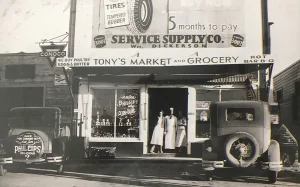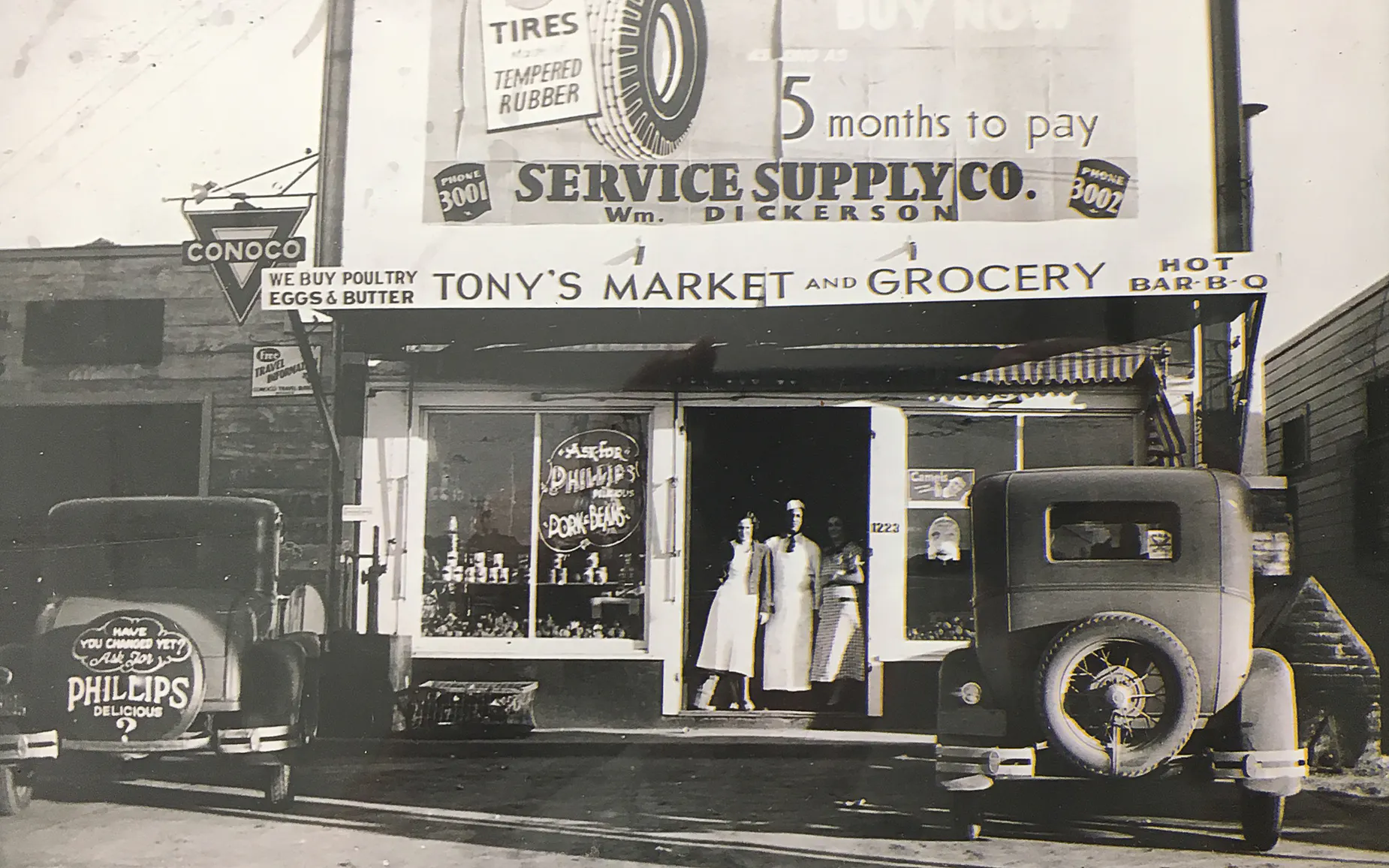 Founded as far back as 1886, these barbecue joints laid the foundation for the pitmasters of today—and what they’re serving is as delicious today as it was in centuries past.
Founded as far back as 1886, these barbecue joints laid the foundation for the pitmasters of today—and what they’re serving is as delicious today as it was in centuries past.
We recently released a list of what we consider the top fifty barbecue joints in the state. The pitmasters on that list are creating the future traditions of Texas barbecue as we speak. But they’ve only been able to do so because of the strong foundation laid by the meat markets and barbecue shacks that came before them. You can certainly satiate your smoked-meat cravings at barbecue joints that have opened this century, but to better appreciate the vast landscape of Texas barbecue, I suggest learning more about our meat history. This guide will help you on that journey.
These are the historically significant—and sometimes legendary—barbecue joints that created our current Texas barbecue culture. Some are born of the Central Texas meat-market tradition; others channel the classic backroad barbecue stands of East Texas. In its own way, each of these eighteen joints helped define the regional differences in our state’s smoked-meat traditions. Collectively, they represent our barbecue legacy.
Southside Market & Barbeque, Elgin (1886)
The first recorded mention of barbecue for sale to the public in the United States was an advertisement from a butcher in Bastrop in 1878. Less than a decade later, the first version of Southside Market opened nearby in Elgin, and the joint is still going strong. In fact, Southside has since opened outposts in Austin, Hutto, and Bastrop. No matter the location, the joint’s famous “hot gut” sausages—which owner Bryan Bracewell tells us “haven’t changed” in 135 years—are the most popular item on the menu.
Kreuz Market (1900), Black’s Barbecue (1932), and Smitty’s Market (1999), Lockhart
The Kreuzes weren’t the first family to bring barbecue to Lockhart. Jesse Swearingen opened a meat market there in 1875 and eventually offered barbecue. In 1900, the Kreuz family bought the market for $200. The barbecue joint still bearing their name is one of the most famous in the state. The massive Kreuz Market restaurant on the north side of Lockhart (now owned by the Schmidt family) was established just 22 years ago, but the building that housed Kreuz Market from 1924 to 1999 is now home to Smitty’s Market, another must-visit joint in Lockhart whose interior is a time capsule of old-school Central Texas barbecue. (Read the backstory of why Kreuz Market left its original location.) A tour through the barbecue capital of Texas wouldn’t be complete without a stop at the original Black’s Barbecue location, just off Lockhart square. Meat market–style barbecue on butcher paper is the order of the day at all three of these historic joints.
Patillo’s Bar-B-Que, Beaumont (1912)
Robert Patillo runs the oldest Black-owned barbecue restaurant in Texas, which holds double honors as the oldest family-run joint in the state. Rather than making its name with brisket and ribs, Patillo’s is known for creating the style of beef links popular in the Beaumont and Port Arthur region. The links, known affectionately as “grease balls,” are all beef, even the casings, and they’re spiced with garlic, paprika, chili powder, and cayenne. Cut one open and squeeze the filling out onto a slice of white bread, and enjoy the unique barbecue specialty of the Golden Triangle.
Jasper’s Bar-B-Q (circa 1919) and Tony DeMaria’s Bar-B-Q (1934), Waco
One Sicilian family is responsible for both of these historic barbecue joints in Waco. Jasper’s is still housed in the building that Gaspare “Jasper” DiMaria moved to in 1926. His nephew Tony DeMaria Sr. (whose side of the family changed the spelling of their surname after emigration) opened Tony’s Market and Grocery in 1934 just down the street. The latter is now housed in the building that Geoff DeMaria, Tony’s grandson, first occupied in 1995. The joints have a throughly unique brisket preparation that starts with simmering the briskets in a vat of broth before finishing them on the smoker. For best enjoyment, lay a few slices of the tender brisket on white bread, add pickles, onions, and hot sauce, and dip it into the family’s signature gravy.
Martin’s Place, Bryan (1925)
Steve Kapchinskie has been manning the pits here for over fifty years. His grandfather Martin opened the place in 1925, then tore it down to build a larger version in 1939. Steve still cooks on the Depression-era pit. Try a sandwich made with brisket sliced from the fatty end, washed down with a beer at the U-shaped counter or at one of the tables whose tops have been worn down over the years by countless hands of dominoes.
Prine’s BBQ, Wichita Falls (1925)
Allen Prine is part of the third generation of Prines to run this tiny barbecue joint in Wichita Falls. The original wood-framed building burned down in 1955, and was replaced by the masonry building that now houses the restaurant. Unlike most barbecue joints its age, Prine’s didn’t begin as a meat market and never sold raw meat. Today it smokes briskets, and the smoked ham is just as popular as the chopped brisket sandwich served with thin, mustardy barbecue sauce. Also worth trying: the house-made pimento cheese and barbecue chili.
Bailey’s Bar-B-Que, Fort Worth (1931)
Shoemaker’s Barbecue was a fixture in Dallas for half a century, starting in 1926. The Shoemaker family learned the business from Bill Cain, who also taught James Bailey how to run a barbecue restaurant. I mention that little bit of history because Bailey’s Barbecue is the closest ’cue you’re going to find to Shoemaker’s in Texas today. Bailey opened his namesake joint in downtown Fort Worth in 1931, and current owner Brenda Phifer hasn’t changed it much since then. Most customers order smoked meat on a bun, dressed with condiments and toppings like pickles, diced onions, jalapeños, and sweet relish from a counter at the center of the tiny dining room.
Brothers Billy Walker Sr. and Arthur Gee of Pat’s Barbecue in Tyler
Ernie’s Pit Barbeque, Greenville (1948)
Ernie Carroll worked at Shoemaker’s Barbecue before moving to Greenville to open his own joint in 1948. After a tornado destroyed the original downtown location in 1985, he rebuilt on a lot closer to Interstate 30. The business is now run by Josh and Krysten Thomas, who have modernized the menu and the cooking methods. They honor the past with an “Ernie Burger,” a brisket sandwich topped with barbecue sauce, yellow mustard, and sweet pickle relish.
Louie Mueller Barbecue, Taylor (1949)
Known as the “cathedral of barbecue” thanks to its lofty ceiling, smoke-stained walls, and massive brick smoker, Louie Mueller Barbecue is the quintessential spot for small-town, Central Texas barbecue. Louie’s name is on the sign, but it’s Fred Fountaine we can thank for creating the barbecue foundation that Bobby Mueller (Louie’s son) built on to make this the first Texas barbecue joint to win a James Beard award. Third-generation pitmaster Wayne Mueller is now at the helm, and the famous beef ribs and house-made sausages are as good as they’ve ever been.
Tom & Bingo’s Hickory Pit Bar-B-Que, Lubbock (1952)
Tom Clanton and Gaston Ray “Bingo” Mills were distant cousins who left East Texas for the Texas Panhandle. Clanton had worked at Shoemaker’s, and the pair decided to open a similar joint in Amarillo. At one time they had six outposts, but the Lubbock location is the last one standing. Pitmaster Ian Timmons, who married into the Clanton family, has added a few new dishes to the menu, but still serves the same barbecue sandwiches and the eighth-pound Bingo burger. Enjoy it at one of the school desks that line the dining room.
Vera’s Backyard Bar-B-Que, Brownsville (1955)
There is only one restaurant in Texas that still cooks whole cow heads over wood coals “en pozo” in a subterranean pit, and that is 2020 James Beard award winner Vera’s in Brownsville. That’s the only way Armando “Mando” Vera knows how to make the South Texas staple of barbacoa de cabeza, and he’s been doing it since he was a teenager. The barbacoa is reason enough to make the pilgrimage to Brownsville, but Mando also makes some of the best carnitas you’ll ever eat. Ask nicely for a tour of the pit and he just might show you.
Tony’s the Pit Bar-B-Q, El Paso (1958)
Brisket hash isn’t quite a staple of El Paso barbecue, but you can find it at a few different spots in town. Tony Vargas Sr. created the dish, but his son Tony Jr. perfected it. The original version of the hash was made from chopped brisket and potatoes, but Tony Jr. added bell peppers, onions, garlic, Worcestershire sauce, spices, and barbecue sauce. Get brisket hash as a plate or a sandwich, both of which are bargains compared to their all-brisket counterparts.
Cooper’s Old Time Pit Bar-B-Que, Llano (1962)
The Wootan family took over the Llano location of Cooper’s in 1986. Since then, the Wootan’s partnered with Barry Cooper (son of Llano’s founder Tommy Cooper) to open five more locations across the state, and all of them cook the direct-heat barbecue of their Hill Country predecessor. A massive pork chop called the “Big Chop” is the signature item, but don’t miss the beef ribs or the cobbler.
Pat Gee’s Barbecue, Tyler (1963)
Brothers Arthur Gee and Billy Walker Sr. continue the legacy of their parents Vida and Mack Henry “Pat” Gee, who opened this shack on a back road east of Tyler in the early 1960s. The joint is a window into Texas history. I stand by what I wrote back in 2016: A chopped brisket sandwich on white bread, covered in sauce poured from a jar by a second-generation pitmaster and eaten in 95-degree heat, is more authentic than any trip to Colonial Williamsburg. The building is decades old and took just four days to build, and the ceiling is stained by smoke—not from the barbecue pit, but from the cast-iron stove that provides the only heat in winter. Let Arthur or Billy make you a sandwich, and for Pat’s sake, don’t hold the sauce.
Mary Ann’s Pig Stand, San Antonio (2007)
This squat building is the last of the once-nationwide Pig Stand chain that began as the country’s first drive-in restaurant in Dallas in 1921. Known for its barbecue pork sandwiches, the chain grew with remarkable speed before World War II. Pig Stand No. 29 in San Antonio is believed to have opened in 1929, and moved to its current spot in 1968. Longtime employee Mary Ann Hill bought the restaurant herself after the chain closed in 2006. The menu hasn’t changed much, and still includes the pig sandwich, with sliced pork, barbecue sauce, and tangy relish on a bun.
Source: https://www.texasmonthly.com/bbq/guide-historic-texas-bbq-joints/

